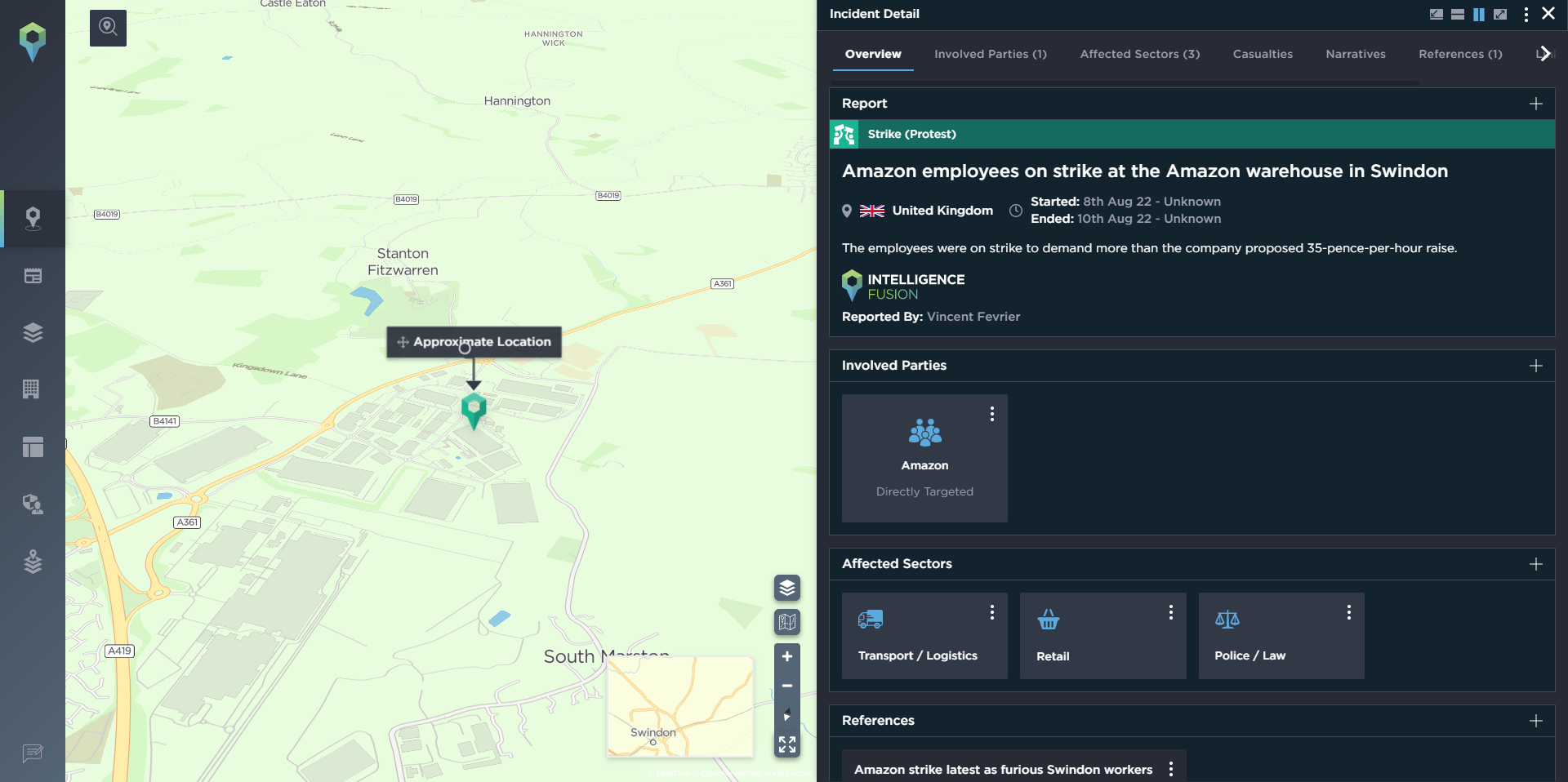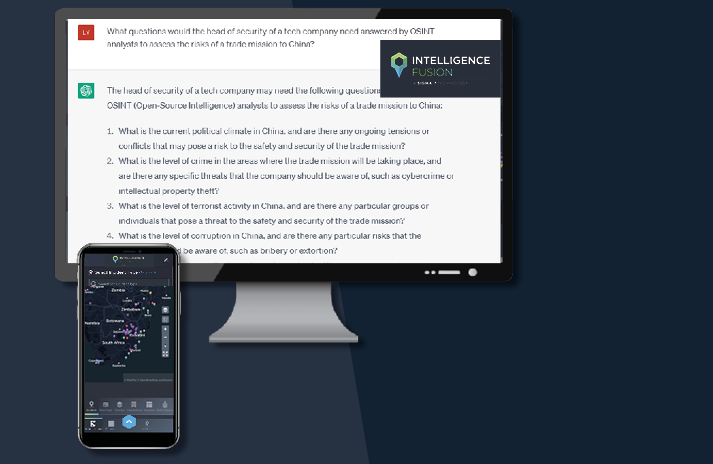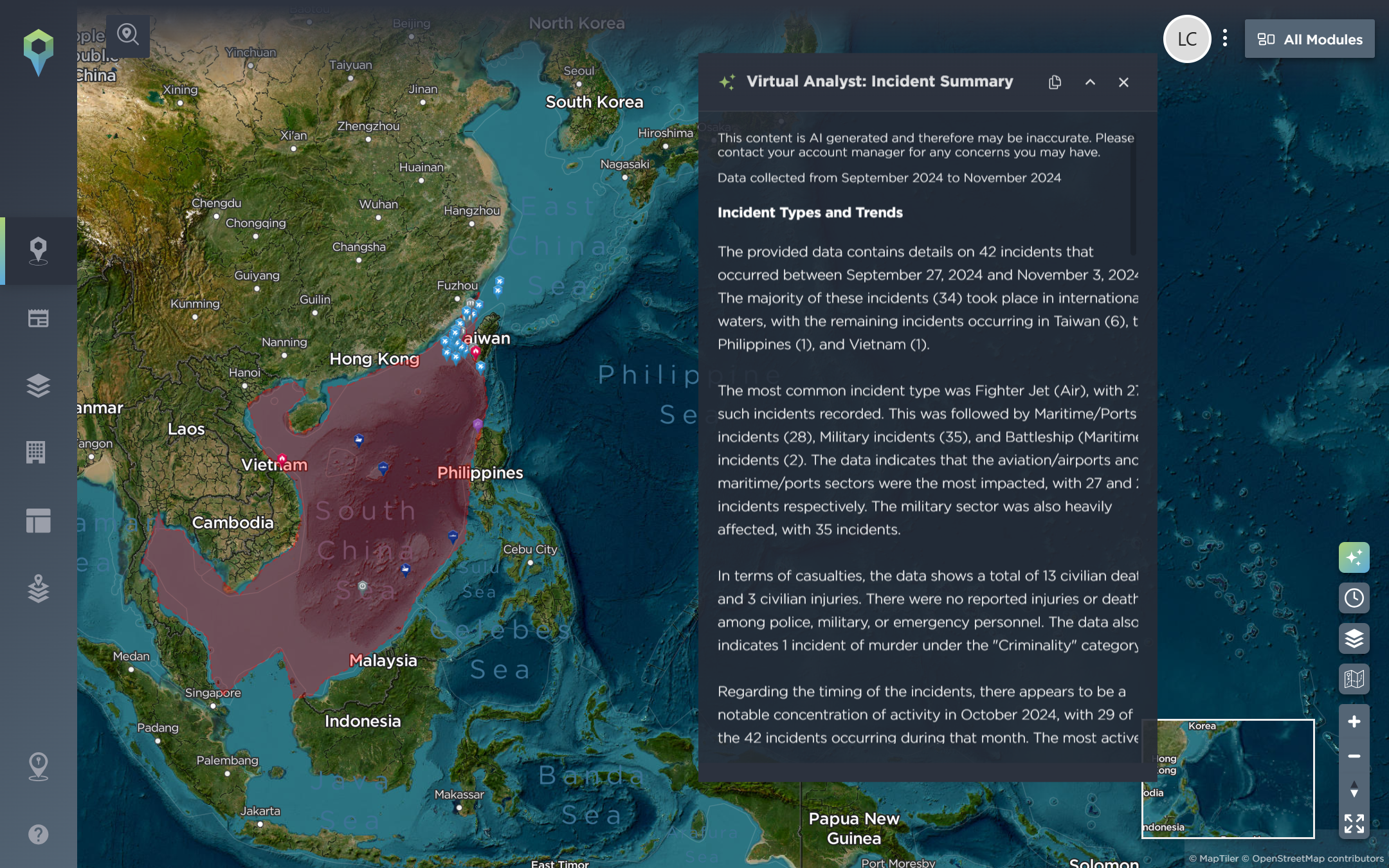How Would a Ban on TikTok Impact OSINT Collection?
Social media is a vital tool for OSINT, and TikTok’s unique reach has made it a key resource for tracking real-time incidents. A U.S. ban would disrupt intelligence gathering, forcing analysts to adapt to alternative platforms and disrupting business continuity for businesses relying on it for selling and advertising.
Social media platforms have become a vital resource for open-source intelligence (OSINT) collection. They allow intelligence analysts to monitor emerging and real-time incidents, track developments, and verify reports across multiple platforms. This capability enhances situational awareness and supports decision-making processes for businesses and government entities.
For example, during the “Big One” protest organized by Extinction Rebellion in London in 2023, Sigma7 Intelligence Fusion monitored multiple social media channels, including TikTok, to provide real-time updates. Over 200 protest alerts were issued, with clients receiving notifications 123 days before the main event, enabling them to implement risk mitigation strategies. Another example of OSINT in action was the shooting of the UnitedHealth Group CEO in New York on December 4, 2024. Analysts utilized TikTok and other platforms to uncover additional threats, identify involved parties, and track the evolution of related demonstrations, as well as emerging risks for other healthcare executives.
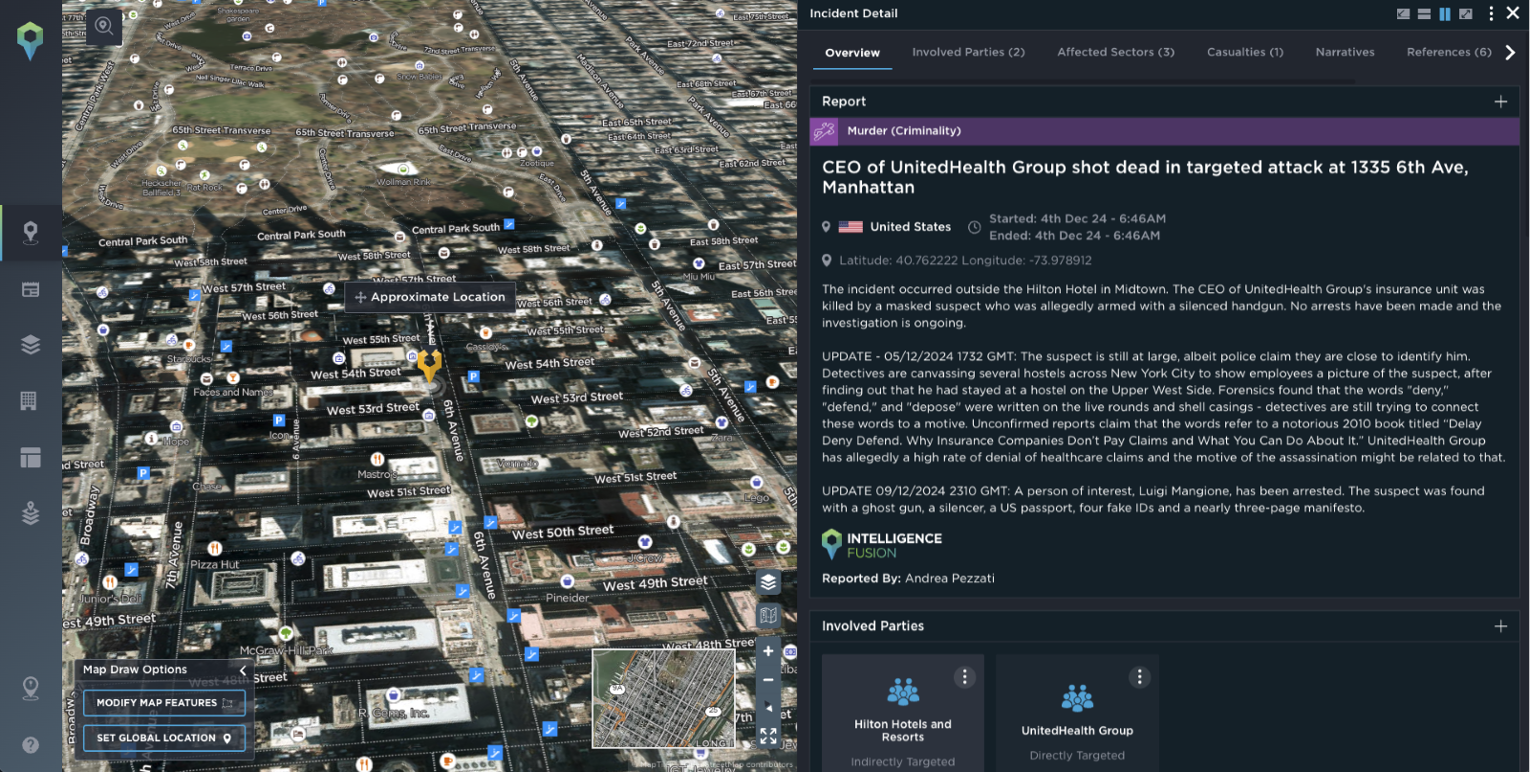
Image Source: Sigma7 Intelligence Fusion
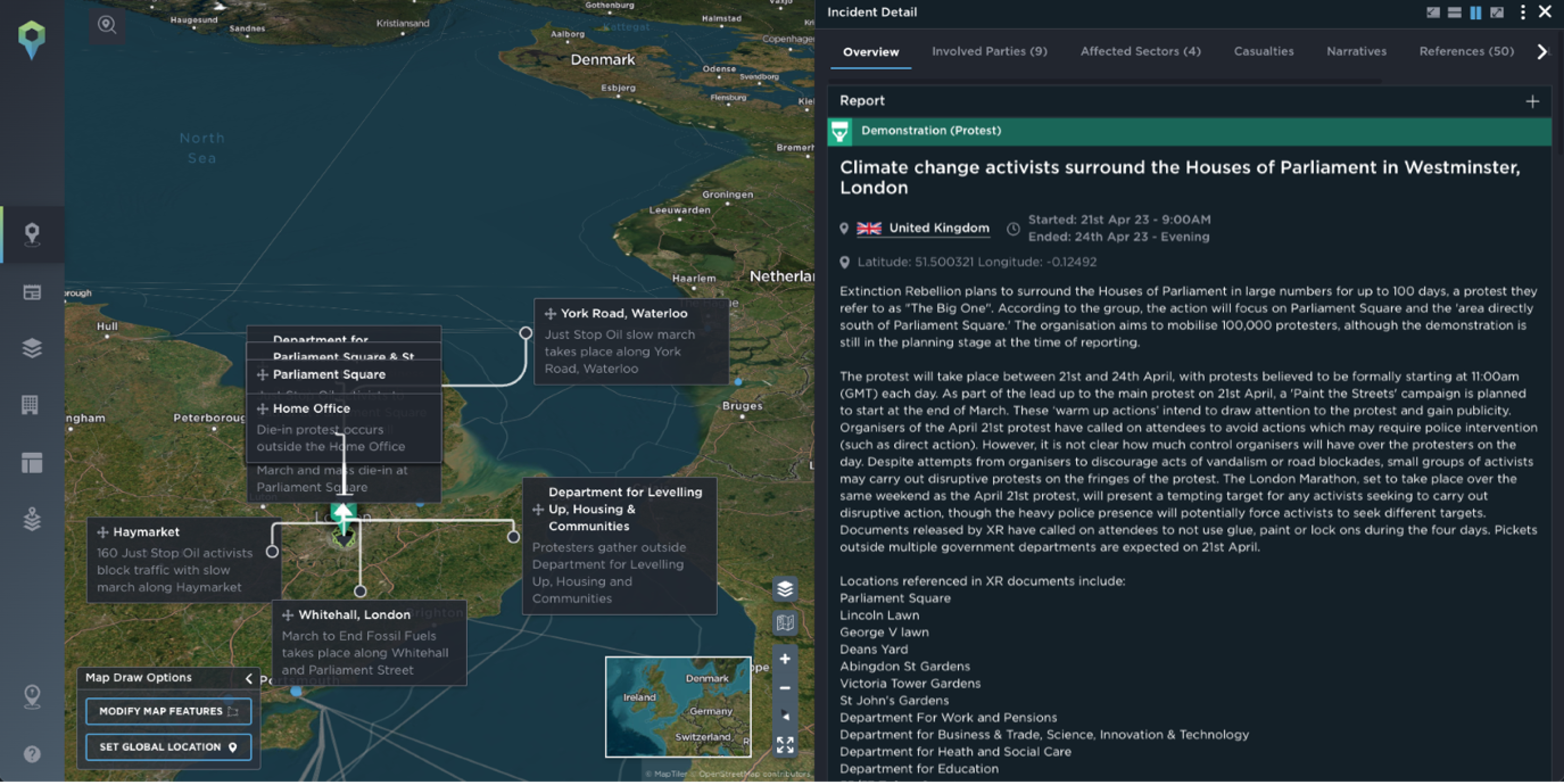
Image Source: Sigma7 Intelligence Fusion
TikTok has over 1.9 billion users globally and has played a significant role in OSINT collection due to its rapid growth— increasing user growth by over 570% since 2018. The platform’s highly engaging algorithm has led to a rise in daily average usage from 27 minutes in 2019 to 58 minutes in 2024.
However, not all content on TikTok is credible. Intelligence analysts are trained in military-grade evaluation techniques to assess the reliability of sources and the authenticity of information. The rise of deepfake technology has made it increasingly difficult for untrained individuals to distinguish real threats from misinformation and disinformation. Analysts rely on structured methodologies such as the language of probability to determine the likelihood of an event taking place based on the information available; this allows them to state whether something is impossible or certain. In addition, the NATO System (or Admiralty Code) is used to assess the credibility of sources, assigning ratings that help senior leaders prioritize threats and make informed security decisions. For example, a reputable news source like Reuters may be classified as A1, whereas an unverified TikTok post might be rated F6.
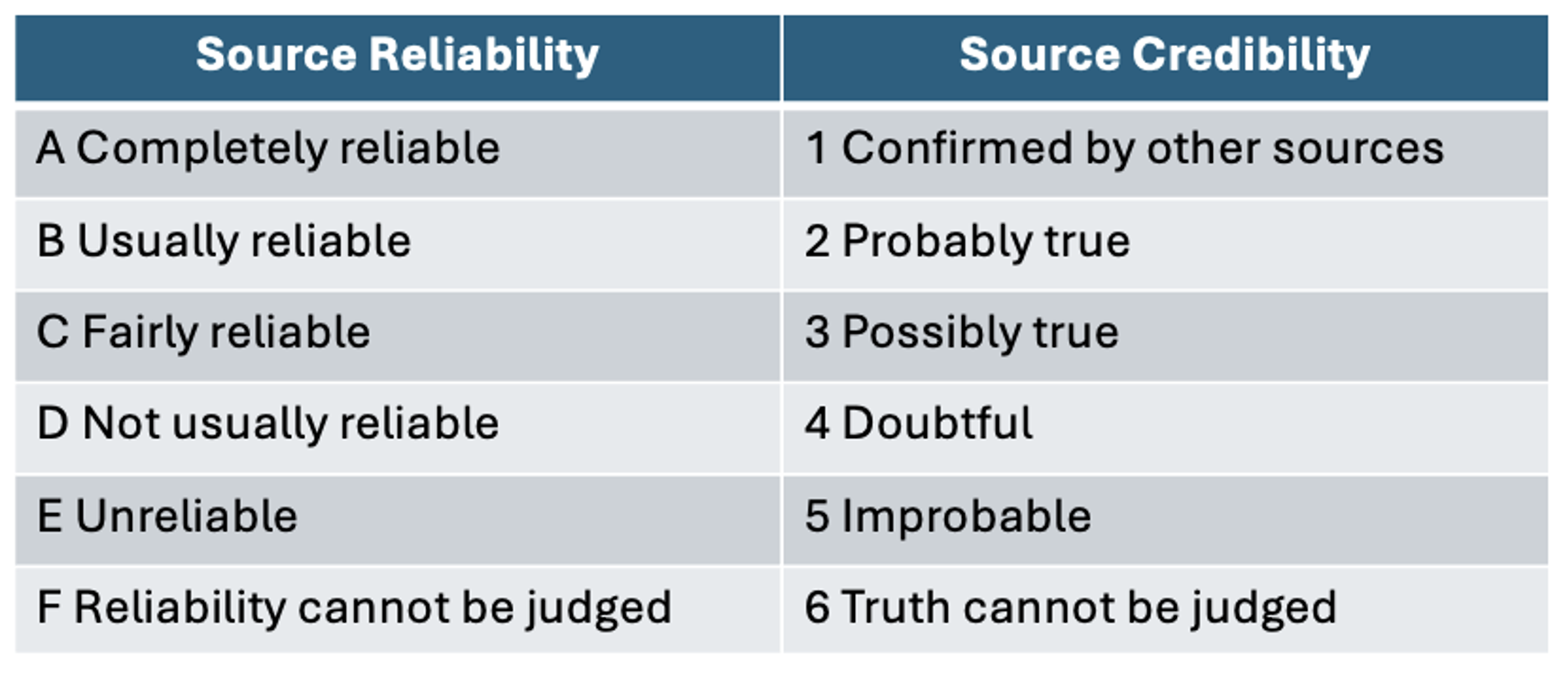
If you would like to learn more about intelligence techniques used to gather and analyse information, sign-up for Intelligence and Security Fundamentals Training.
What Are the Data Privacy Concerns Related to TikTok?
TikTok’s parent company, ByteDance, has been at the center of global scrutiny due to concerns about data privacy and potential access by the Chinese government. Unlike many Western countries with strict data protection regulations, China’s laws mandate that companies make data available to the Chinese government upon request. This has raised alarms among U.S. policymakers, who fear that TikTok’s data collection practices could expose Americans’ personal information, facilitate corporate espionage, and pose national security risks.
TikTok, like other social media platforms, collects user data, including location, device information, IP addresses, and browsing history. While this data is typically used for content personalization and user experience enhancement, allegations persist that ByteDance has used TikTok to track users’ real-time locations. A 2023 report by SecJuice highlighted that despite denials from TikTok, leaks and insider testimonies suggest otherwise.
A 2020 White House Executive Order under the Trump administration stated: “This data collection threatens to allow the Chinese Communist Party access to Americans’ personal and proprietary information—potentially allowing China to track the locations of Federal employees and contractors, build dossiers of personal information for blackmail, and conduct corporate espionage.” While this concern has existed since TikTok’s inception in 2016, the debate has intensified, leading to recent legislative actions in the U.S.
On January 19, 2024, the Biden administration set a deadline for ByteDance to sell their stakes in the company to an approved US buyer. The failure to secure a sale led to a temporary ban on January 20, which was then reversed by the returning Trump administration for a 75-day period, allowing additional time for negotiations.
What Impact Would a Ban on TikTok Have on OSINT Collection?
If TikTok were permanently banned in the U.S., OSINT analysts would lose a key intelligence-gathering tool, particularly for tracking real-time incidents in American regions. While other social media platforms would be leveraged as alternatives, it would impact the ability to view live videos and verify reports.
Some platforms, such as Red Book and Bluesky, have seen a rise in users since TikTok was temporarily taken offline in the U.S. However, building an audience of similar scale and engagement will take time.
The Chief Secretary to the Treasury in the UK, Darren Jones, stated, “[The UK] won’t be following the same path as the Americans unless or until… there is a threat that we are concerned about in the British interest, and then, of course, we will keep it under review.” This suggests that while the U.S. may move ahead with a ban, other nations may take a more cautious approach.
What Would U.S. Ownership of TikTok Mean?
If TikTok were acquired by a U.S.-based entity, the implications would depend on the terms of the sale and any regulatory frameworks imposed. The U.S. government might gain increased access to user data, subject to legal oversight. While data privacy regulations would still apply, there could be greater transparency regarding data storage and sharing practices.
Regulatory restrictions may be placed on TikTok’s algorithm, content moderation policies, and data-sharing agreements to ensure compliance with national security concerns. However, the extent of government involvement would ultimately depend on the acquiring party and the agreements put in place to address security risks.
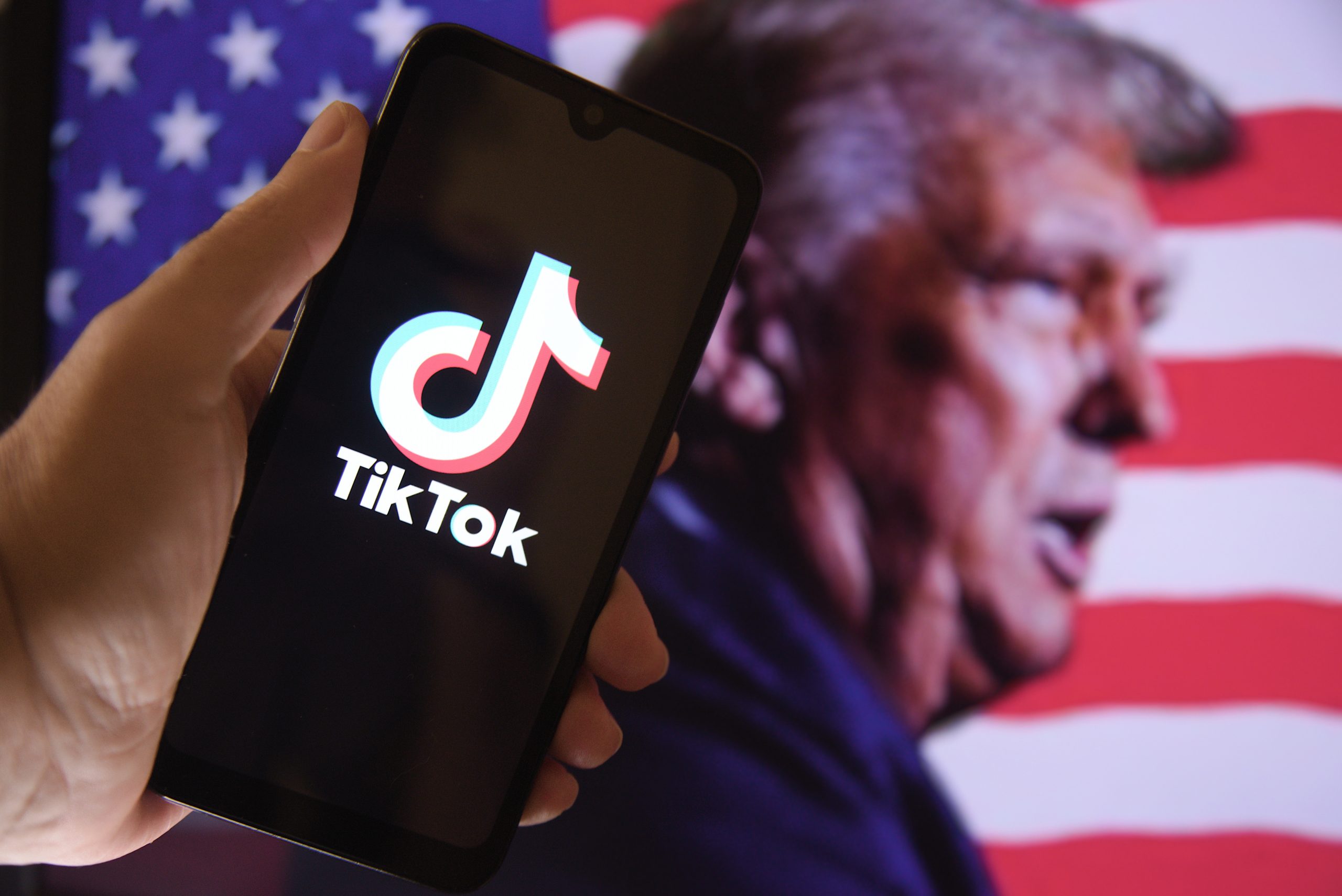
Editorial credit: Saulo Ferreira Angelo / Shutterstock.com
What Impact Would a Ban on TikTok Have on Businesses?
For businesses that rely on TikTok for marketing, advertising, and direct sales, a ban would have significant financial implications. Many brands, particularly small businesses and influencers, generate substantial revenue through TikTok’s advertising network and influencer partnerships.
A shift to alternative platforms would be necessary, but the transition could be disruptive in the short term. Influencers with large followings would need to rebuild their audience engagement elsewhere, and brands might have to allocate additional resources to adapt their digital marketing strategies.
In terms of business continuity, organizations should proactively explore other social media channels to diversify their online presence and reduce dependency on any single platform. Developing contingency plans and leveraging multi-channel marketing approaches will be critical in mitigating potential disruptions.
How to Ensure OSINT Collection Is Credible, Reliable, and Timely?
Relying on a single platform for intelligence gathering is a risk. To ensure high-quality OSINT, analysts should utilize multiple sources, cross-referencing information for accuracy. Human expertise combined with AI-powered intelligence gathering and analysis can enhance verification and contextual understanding.
A platform like Sigma7 Intelligence Fusion provides access to over 2 million historical data points and processes more than 20,000 new incidents each month. Each incident is fully verified and contains at least one source, incidents include contextual insights to support informed decision-making and are assigned an impact rating to allow users to filter for incidents from insignificant to extreme. Advanced tools such as geo-fencing and static assets enable businesses to track threats in proximity to their assets and conduct risk assessments for specific routes, areas they intend to travel or areas surrounding their sites.
By leveraging a combination of human analysts and AI-driven intelligence solutions, businesses can ensure rapid, accurate, and actionable intelligence, allowing them to make critical decisions with confidence. To learn more about the Sigma7 Intelligence Fusion platform, book a demo today.
Conclusion
A ban on TikTok would pose challenges for OSINT collection, particularly in tracking real-time incidents and emerging threats in the U.S. While analysts would adapt by leveraging alternative platforms, the shift would require time to gather comparable intelligence. However, utilizing a diverse range of sources is best practice to check the credibility of reports and ensure key information is not missed. The potential sale of TikTok to a U.S.-based entity could mitigate some security concerns, but the long-term impact would depend on regulatory measures and data governance policies.
For businesses, leveraging a platform like Sigma7 Intelligence Fusion can help security teams maintain resilience and situational awareness. As the digital landscape continues to evolve, businesses and intelligence professionals must remain agile, ensuring that they have the tools and expertise to navigate an increasingly complex information environment.

